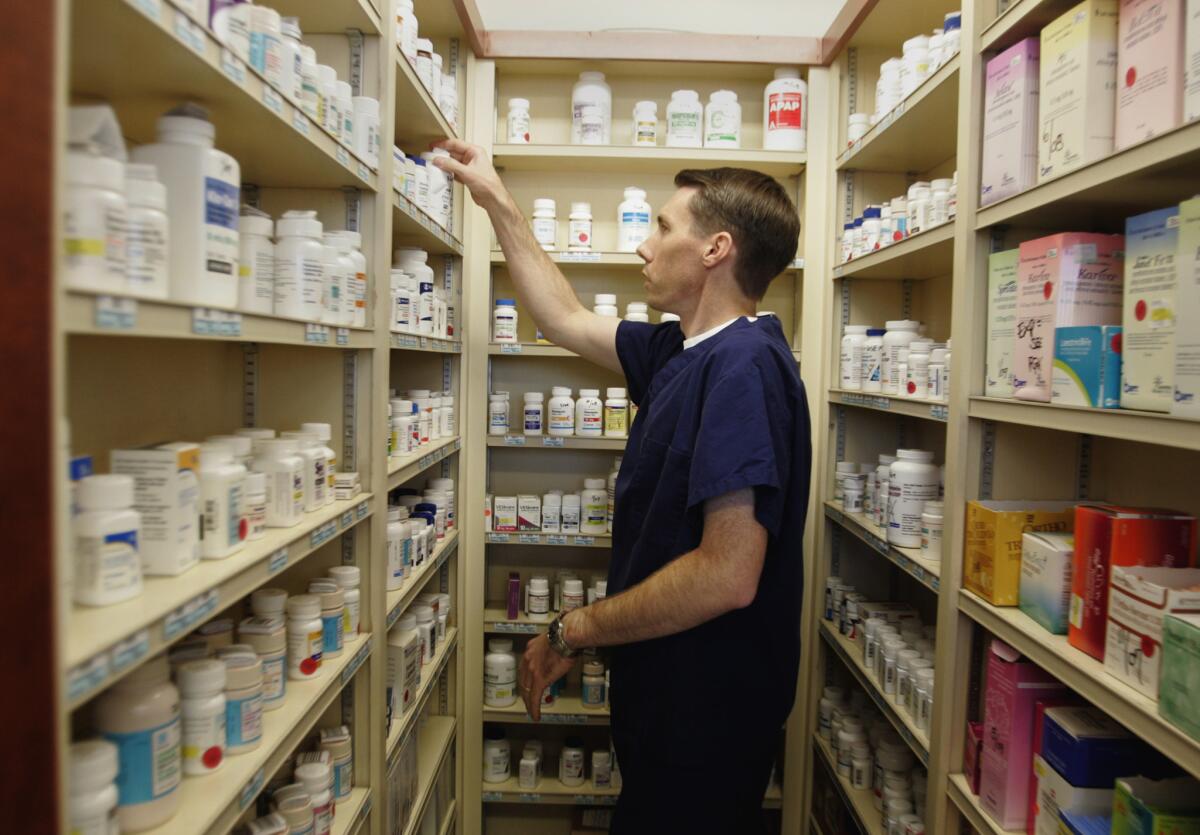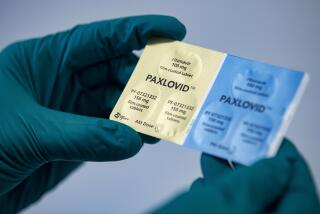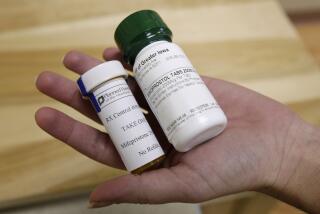Rx for America: Nearly 6 in 10 adults take prescription drugs, study says

Nearly 60% of Americans take at least one prescription medicine, and 15% take five or more, according to a new study.
- Share via
Americans have become increasingly medicated since the turn of the century, according to a new study.
Fully 59% of U.S. adults were on at least one prescription drug in the years 2011 and 2012, and 15% took five or more. A dozen years earlier, 51% of adults filled at least one prescription and 8% filled at least five, federal survey data show.
The researchers who crunched these numbers said there was no single explanation for the striking rise in prescription drug use. The graying of America and the advent of Medicare Part D contributed to the increase, but the nation’s obesity crisis was probably a bigger factor, they wrote Tuesday in the Journal of the American Medical Assn.
Among the 10 drugs that were most widely used in 2011 and 2012, eight are prescribed to treat diabetes, high cholesterol, high blood pressure or other conditions often related to being overweight or obese. A ninth drug -- omeprazole, a.k.a. Prilosec -- is more commonly used by people who carry too many extra pounds, they wrote.
The study is based on data from the National Health and Nutrition Examination Survey, an ongoing study conducted by the Centers for Disease Control and Prevention. People who were at least 20 years old were interviewed in their homes and asked whether they had taken any prescription medications in the last 30 days. Responses from 37,959 people were included in the study.
The researchers identified 18 distinct classes of drugs that were used by at least 2.5% of Americans; 11 of those drug classes were more widely used in 2011 and 2012 than in 1999 and 2000, they found.
The most popular medications were those designed to treat high blood pressure -- 27% of adults took them in 2011 and 2012, up from 20% in 1999 and 2000, according to the study.
Coming in second were statins and other cholesterol-lowering drugs -- their prevalence rose from 8% to 18% over the same period, the researchers wrote.
Another notable increase was seen in prescriptions for antidepressants. In the early years of the study, 7% of Americans were taking these drugs; by the end of the study period, that figure had nearly doubled to 13%. The rising popularity of selective serotonin reuptake inhibitors (including Prozac, Zoloft and Paxil) and serotonin-norepinephrine reuptake inhibitors (including Cymbalta and Effexor) fueled the increase, the study authors found.
Some types of medication became less popular over the 12-year period. Chief among them were the hormones that used to be a common treatment for women experiencing hot flashes and other symptoms associated with menopause. Their use among women fell from 19% to 11% following the discovery that hormone replacement therapy was associated with an increased risk of breast cancer, heart disease and stroke.
The older Americans were, the more likely they were to be taking prescription drugs, according to the study. For instance, 9 in 10 senior citizens took at least one such medication in 2011 and 2012, and 39% took five or more. Meanwhile, 65% of middle-aged Americans were on at least one prescription drug (including 15% who took five or more), as were 35% of adults in their 20s and 30s (including 3% who took five or more).
The researchers used statistical methods to account for the fact that Americans as a whole got older during the study period, but still found that overall drug use was higher in 2011 and 2012 than in 1999 and 2000.
The single most popular drug at the end of the study period was simvastatin (a.k.a. Zocor), a cholesterol-lowering drug that was taken by 8% of Americans. The other top 10 medications were lisinopril (an ACE inhibitor used for high blood pressure and heart failure), levothyroxine (a thyroid hormone), metoprolol (a beta-blocker that treats high blood pressure, chest pain and heart failure), metformin (prescribed to treat type 2 diabetes), hydrochlorothiazide (a blood pressure medication), omeprazole (to treat stomach ulcers, heartburn and gastroesophageal reflux disease ), amlodipine (a calcium channel blocker that improves blood pressure and reduces chest pain), atorvastatin (the statin sold as Lipitor) and albuterol (a bronchodilator for people with asthma or other breathing problems).
Except for Lipitor, all of these drugs were more widely used in 2011 and 2012 than they had been 12 years earlier.
Follow me on Twitter @LATkarenkaplan and “like” Los Angeles Times Science & Health on Facebook.







